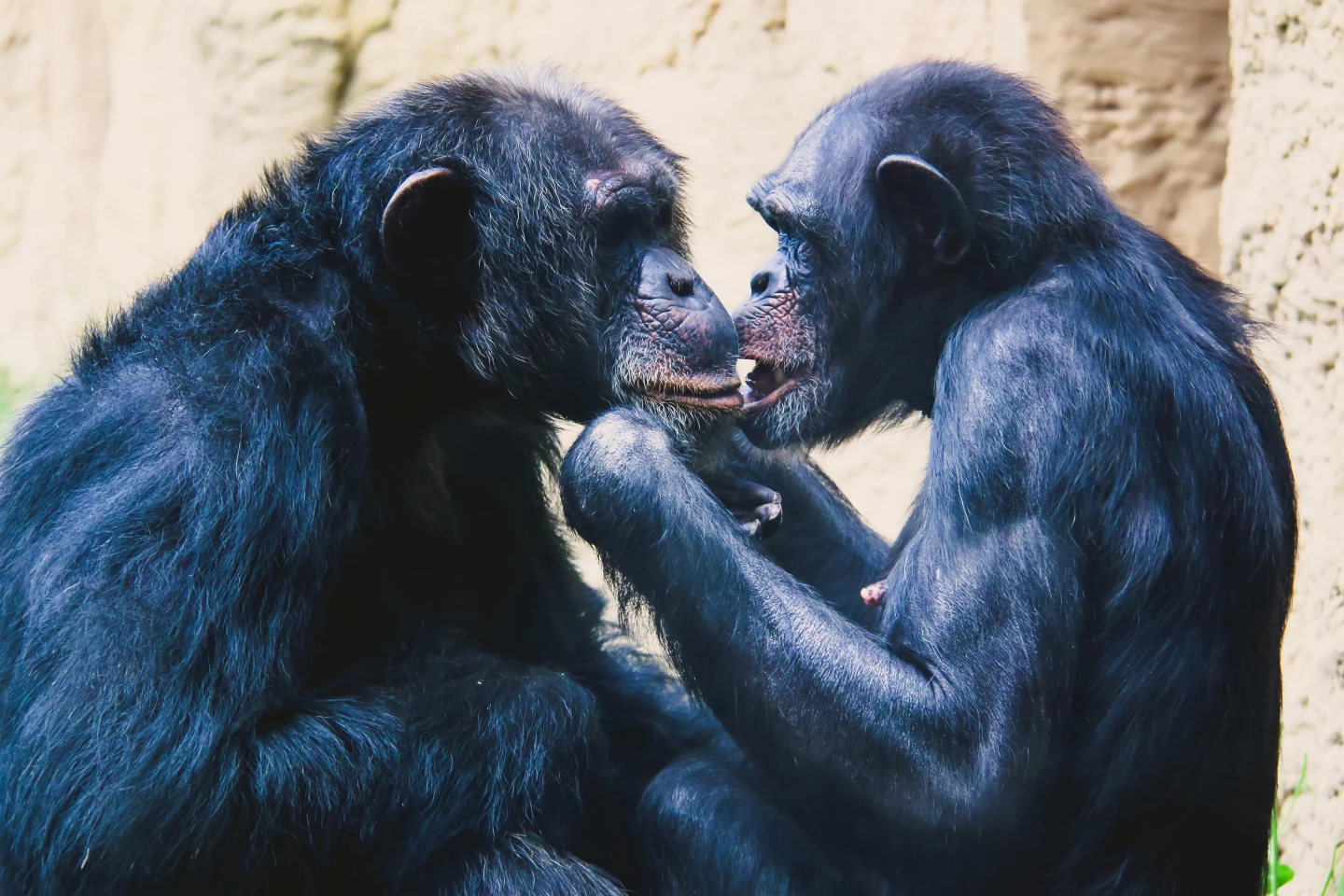Most of us do it, be it romantic, familial, friendly or formal, but kissing among humans and where and how it originated is still hotly debated among historians and anthropologists. Now a new theory has been put forward: That our evolutionary loss of body hair is at the root of this behavior's origins and how it's changed over the hundreds of thousands of years of human existence.
University of Warwick's Adriano R. Lameira, a primatologist turned evolutionary psychologist, has put forward a new hypothesis of the origins of kissing, which dates back to our ancestral primates and their social-bonding behaviors. This would make it an act that dates back many millions of years.
While the name conjures something a little sinister, the “groomer’s final kiss” theory refers to how the interaction that resembled lip-to-skin contact was commonplace among ancient primates, serving not just to remove parasites but to tighten ties in a community with complex social dynamics. But as Homo sapiens and great apes underwent divergent evolution, branching out along separate paths from their common ancestor, this grooming behavior in humans became increasingly reduced – until just the one feature of this social interaction, the kiss, remained.

“The evolution of kissing is best understood through the biology and behavior of great apes, who offer living proxies of human’s hominid ancestors,” Lameira says. “Among terrestrial nonhuman primates, including great apes, the dominant and most prevalent signal of social bonding is grooming.
“According to the 'groomer’s final kiss' hypothesis, it is predicted that mutual, mouth-to-mouth kissing emerged in, and stemmed from, social contexts when ancestral apes originally mutually groomed each other at the same time, although this type of grooming is rare among extant great apes compared to one-way grooming," Lameira notes in the paper.
A study in 2015 found that, of the 168 different cultures studied, only 46% engaged in romantic kissing. However, it also estimated that around 90% of the world's modern cultures have some type of kiss involved in human contact – a majority of which is between parents and children, but also among relatives, friends and as symbolic gestures in ceremonies or formal exchanges.
"Even though social rules around kissing vary within and across societies, all kissing 'etiquettes' share the common function of regulating and containing the apparent strong intimate connotation of kissing," Lameira noted. "Kissing is reserved to specific relationships in specific social instances. This implies that kissing is imbued with an underlying universal biological meaning that crosses cultures, hinting at an evolutionary basis older than the cultural conventions themselves."
The mechanics of kissing – the act of pressing your lips against a surface and applying light suction – is much like what terrestrial primates use to remove parasites from a companion's fur and skin. This labor-intensive grooming may have essentially become redundant as humans evolved to have increasingly less body hair and exposure to such parasites, yet its role as a bonding mechanism may have remained.
"In comparison with a typical primate, humans groom 89% less than the expected, especially for hygienic purposes," the researcher noted. "This is consistent with the loss of fur during human evolution."
At the same time as the reduction of hair, Lameira noted, was the development of human vocalization that led to more direct means of communication among individuals, potentially making an elaborate 'kissing' routine less important for social cohesion. However, this hypothesis is one that is still hotly debated among researchers.
"The common notion across schools of thought is, however, that the social function of grooming was completely lost and replaced by a disparate suit of behaviors," Lameira wrote. "It has never been considered, nor can it be theoretically excluded, that some vestigial form of grooming persisted, retaining (at least some of) the ancestral social functions."
A 2023 study observed that lip-to-lip kissing existed in ancient Mesopotamia circa 2500 BCE, yet its origins remain largely theoretical, based on the inherent difficulty in assessing many ancient human and non-human behaviors.
The study was published in the journal Evolutionary Anthropology.
Source: The University of Warwick via phys.org






